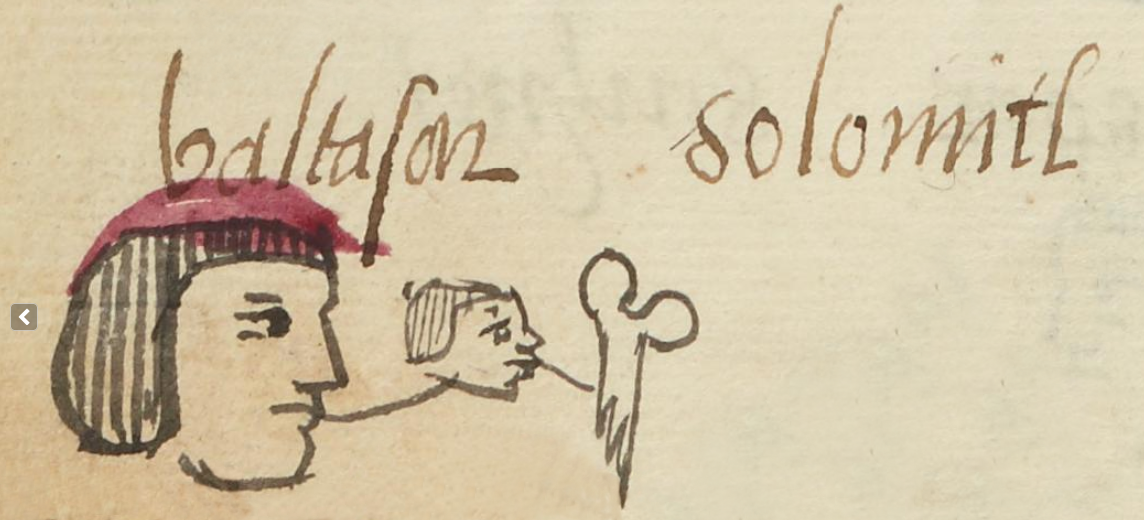Xolomitl (MH639v)
This black-line drawing of the compound glyph for the personal name Xolomitl ("Servant's Bone"? attested here as a man's name) shows a vertical bone (omitl), with the articular cartilage of the epiphysis (joint area) at the top and a jagged, broken tip at the bottom. To the left of the bone is the head of what may be a young man, perhaps a servant or page (xolo).
Stephanie Wood
The servant or page (xolo) may have a semantic meaning in the name, or perhaps the man's head serves as a phonetic indicator for xolotl, the dog, and a dog's bone in the real intention. Further research might clarify this.
The use of "S" in place of "X" in the gloss is not unknown in the sixteenth century, but it is much more common in later orthography. For another example, see Xolotl (MH638v), below.
Stephanie Wood
solomitl
Xolomitl
Stephanie Wood
1560
Jeff Haskett-Wood
dog, perro, nombres de hombres, hueso, huesos

xolo, a page or servant, https://nahuatl.wired-humanities.org/content/xolotl
omi(tl), bone, https://nahuatl.wired-humanities.org/content/omitl
Hueso del Serviente (o del Perro?)
Stephanie Wood
Matrícula de Huexotzinco, folio 639v, World Digital Library, https://www.loc.gov/resource/gdcwdl.wdl_15282/?sp=361&st=image.
This manuscript is hosted by the Library of Congress and the World Digital Library; used here with the Creative Commons, “Attribution-NonCommercial-ShareAlike 3.0 License” (CC-BY-NC-SAq 3.0).








